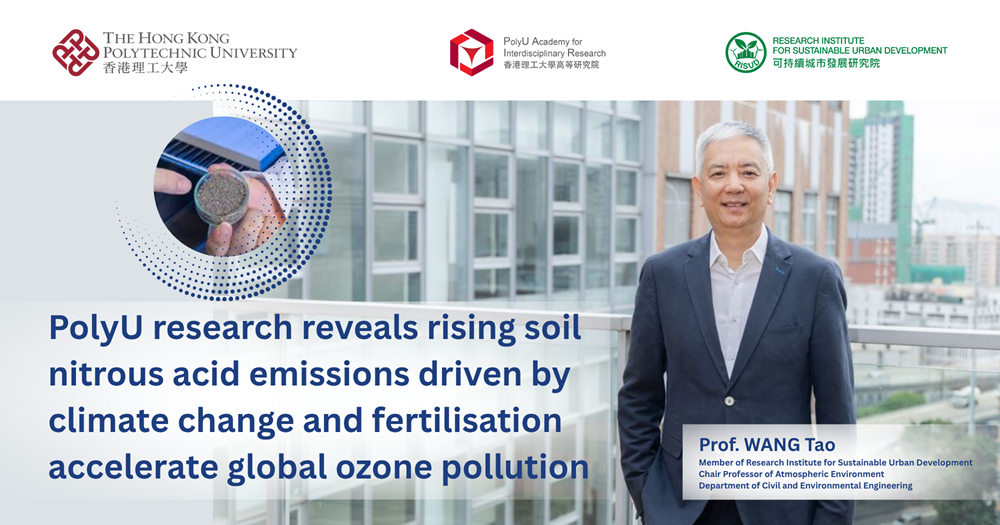PolyU research reveals rising soil nitrous acid emissions driven by climate and fertilisation change accelerate global ozone pollution
A study led by Prof. WANG Tao, an Executive Committee member of the Research Institute for Sustainable Urban Development (RISUD), Chair Professor of Atmospheric Environment in the Department of Civil and Environmental Engineering, along with his research team, has unveiled the pivotal role that soil nitrous acid (HONO) emissions play in the increase of the ozone mixing ratio in the air and their negative impact on vegetation.
The team analysed global soil HONO emissions data from 1980 to 2016. The researchers found that soil HONO emissions have increased from 9.4 Tg N in 1980 to 11.5 Tg N in 2016. Using the chemistry-climate model to simulate the impact of these emissions on atmospheric composition, they discovered an average 2.5% rise annually in the global surface ozone mixing ratio, with localised increases reaching up to 29%. The team pointed out that soil HONO emissions are influenced by the combined effects of nitrogen fertiliser usage and climate factors such as soil temperature and soil water content, resulting in seasonal and geographical variations.
The research established a comprehensive dataset by integrating multiple variables, including climate factors like soil temperature, soil water content, and fertiliser type and application rates into the parameterization scheme. For unquantifiable factors such as microbial activities, land use, and soil texture, the team applied diverse parameters based on latitude, longitude, and land use data of the corresponding soil samples. The findings have been published in Nature Communications.
Read the full paper: https://www.nature.com/articles/s41467-025-57161-6
理大研究揭示化肥及氣候變化導致土壤亞硝酸排放上升,加劇全球臭氧污染
可持續城市發展研究院成員、土木及環境工程學系大氣環境講座教授王韜教授帶領團隊進行的一項研究揭示,土壤亞硝酸(HONO)排放是導致臭氧濃度上升的重要原因,並會對植被帶來負面影響。
研究團隊分析了1980至2016年間全球土壤亞硝酸排放數據。研究指出,全球土壤亞硝酸排放量從1980年的9.4 太克氮(Tg N)升至2016年的11.5 太克氮。團隊利用化學氣候模型模擬這些排放對大氣成分的影響,發現全球表面臭氧濃度會因此每年平均上升2.5%,局部區域的增幅更高達29%。團隊亦指出,土壤亞硝酸排放受氮肥使用及土壤溫度、土壤水分含量等氣候因素的共同影響,排放量因而有明顯的季候性及地域性差異。
研究通過將多項變量,包括土壤溫度、土壤含水量等氣候因素以及肥料類型及施用量納入參數化方案,成功建立了全面的數據集。針對微生物活動、土地利用及土壤質地等難以量化的因素,團隊基於相應土壤樣本的緯度、經度和土地利用數據應用不同的參數。相關研究成果已發表於《Nature Communications》。
閱讀全文:https://www.nature.com/articles/s41467-025-57161-6(只供英文)



